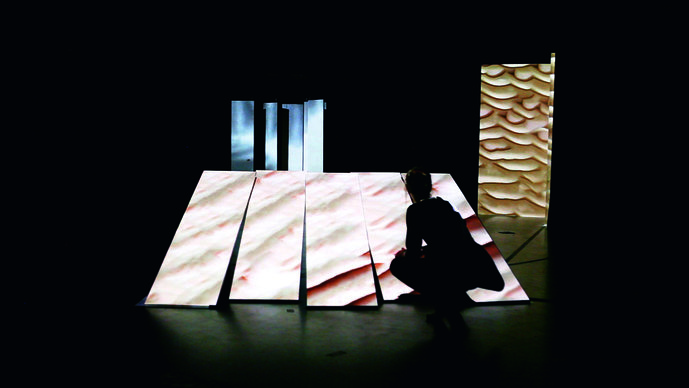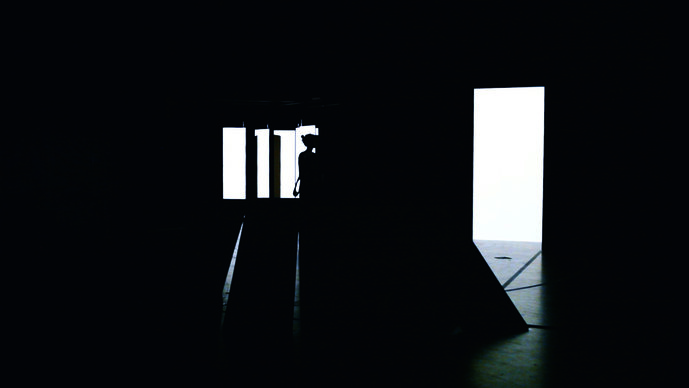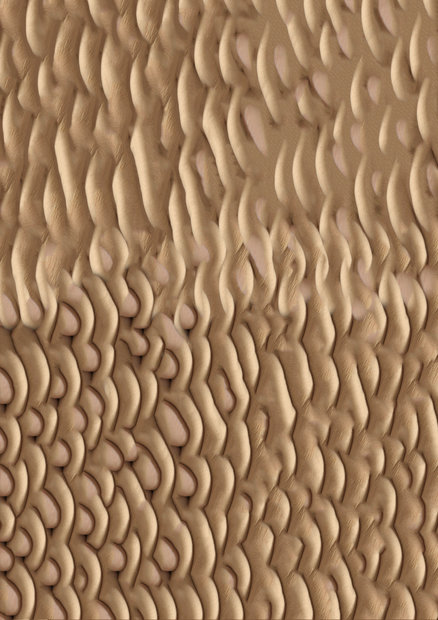

© Evi Künstle


© Iris Weigel


© Magdalena Stateva


© Magdalena Stateva


© Iris Weigel
The audio visual installation, PYGMALIA, deals with the search for identity – a process located between two often contradictory forces: one’s own impulses and societal expectations. The story of Pygmalion from Greek mythology is adapted and transformed here. The work refers to the story of the disappointed sculptor Pygmalion, who creates a partner according to his own imagination. Weigel and Mainz change their perspectives in PYGMALIA and ask about the hitherto nameless female protagonist without an identity.
Pygmalion appears in the installation as a designer of human anatomy and a programmer of behavioral codes. According to a clearly defined layout based on the Vitruvian man, minimalistic objects made of plywood that allow associations to both a domestic architecture and a human body can be seen. This second association is supported by projections of skin structures - as an enveloping organ to delimit the inside and outside. A woman's voice reports on the design process and provides insights into the precarious web of relationships between the designer and the protagonist. Projections and sound are coordinated and assign each object its own position in the overall context. Abstracted scratching, crunching and sipping sounds are channeled through contact speakers on the objects. The unconscious first defies shaping and therefore the constructed body. The process of a reset is described, the given reordered, the music takes over in the search for its own melody. The projections are distorted and override the original order - the construction leaks out of its planned form.
Tutors:
Sereina Rothenberger, Rebecca Stephany, Iris Drögekamp, Heike Schuppelius, Dr. Daniel Hornuff
Audio visual installation, accessible, ca. 40mins Plywood, projector, media player, contact speakers, amp, tape, coconut mats, straps
Funded by the cultural offices of the city of Karlsruhe